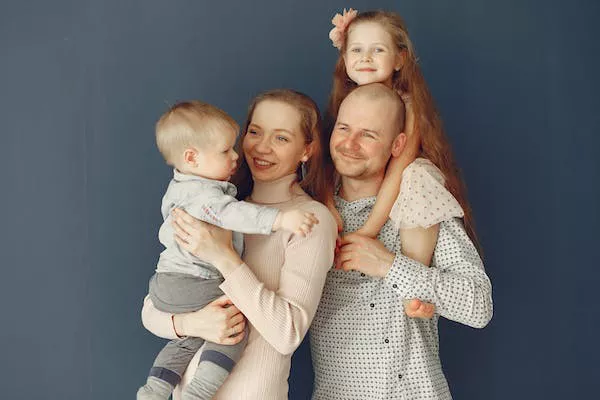Welcoming a newborn into your life is a joyful and transformative experience. However, caring for a baby can be both rewarding and challenging, as you navigate the world of parenthood. One common question that many parents have is, “Do babies like being cradled?” In this article, we’ll explore this question and delve into the science, psychology, and benefits of cradling infants.
1. The Science Behind Cradling
Cradling a baby is an age-old practice that transcends cultures and generations. But what makes it so universally comforting to infants? The answer lies in the science of touch and bonding. When you cradle a baby, you provide them with essential physical and emotional contact. This skin-to-skin connection releases oxytocin, often referred to as the “love hormone,” in both the baby and the caregiver.
2. The Soothing Effect
Babies are born into a world that is vastly different from the warm and cozy environment of the womb. This transition can be challenging for them, leading to fussiness and discomfort. Cradling offers a soothing effect that mimics the sensations they felt in utero. The gentle rocking motion and secure feeling of being held can calm a fussy baby and help them feel safe and protected.
3. Bonding and Attachment
Cradling is not just about soothing a baby; it’s also about building a strong emotional bond. When you cradle your baby, you’re fostering a sense of trust and security. This attachment forms the foundation for healthy emotional development. Babies who experience secure attachments are more likely to grow into confident and emotionally resilient individuals.
4. Understanding Individual Preferences
While cradling is generally well-received by most babies, it’s important to remember that each baby is unique. Some infants may prefer being cradled while others may prefer different forms of soothing, such as being held upright or swaddled. Pay attention to your baby’s cues and adapt your caregiving style to meet their individual needs.
5. Cradling Techniques and Safety
To make the most of cradling, it’s essential to practice safe techniques. Ensure that the baby’s head is supported and that they can breathe comfortably. Use gentle, rhythmic motions while cradling, and always maintain eye contact and talk soothingly to your baby. Additionally, consider using a baby carrier or sling, which allows you to keep your baby close while maintaining mobility.
Conclusion:
In conclusion, cradling is a time-honored practice that offers numerous benefits for both babies and caregivers. It promotes bonding, soothes fussy infants, and fosters emotional security. While most babies enjoy being cradled, it’s important to remember that individual preferences vary. As a parent or caregiver, your ability to adapt to your baby’s unique needs is key to providing the best care and building a strong emotional connection.
In the end, the simple act of cradling your baby is a powerful way to communicate your love and affection. It’s a reminder that, in the arms of a loving caregiver, a baby can find comfort, security, and the warmth of a loving embrace.
Remember, every baby is different, so pay attention to your baby’s cues and enjoy this special bonding time.
FAQs about Do Babies Like Being Cradled
1. Why do babies seem to enjoy being cradled?
Babies often find cradling comforting because it reminds them of the secure and cozy environment of the womb. The gentle rocking motion and close contact provide a sense of safety and warmth.
2. Is cradling suitable for all babies?
While cradling is generally well-received by most infants, individual preferences vary. Some babies may prefer other forms of soothing, such as being held upright or swaddled. It’s essential to pay attention to your baby’s cues and adapt your caregiving style accordingly.
3. At what age should I stop cradling my baby?
There’s no specific age to stop cradling your baby. As your child grows, they may naturally become less dependent on being cradled for soothing. It’s best to follow your child’s cues and gradually transition to other forms of comfort as they develop.
4. Can I use a baby carrier or sling instead of cradling?
Yes, baby carriers and slings are excellent alternatives to cradling. They allow you to keep your baby close while maintaining mobility. Just ensure that you use them safely, following the manufacturer’s instructions.
5. Are there any safety concerns with cradling?
Safety is paramount when cradling a baby. Always support the baby’s head and neck, ensure they can breathe comfortably, and avoid any sudden or jerky movements. Maintain eye contact and speak soothingly to your baby during cradling.
6. How does cradling contribute to bonding with my baby?
Cradling fosters a strong emotional bond between you and your baby. It provides an opportunity for skin-to-skin contact and promotes the release of oxytocin, the “love hormone,” in both you and your baby. This attachment is crucial for healthy emotional development.
7. What if my baby doesn’t seem to like being cradled?
If your baby doesn’t appear to enjoy being cradled, don’t worry. Every baby is unique, and preferences can change. Experiment with other soothing techniques and pay attention to what works best for your baby at different times.
8. Can I overdo cradling my baby?
It’s unlikely to overdo cradling in the early months of a baby’s life. Infants often need frequent physical contact and reassurance. However, as your baby grows, they may become more independent, and you can gradually reduce the frequency of cradling while still providing comfort and support
9. How can I incorporate cradling into my daily routine?
Cradling can be integrated into various daily activities, such as during feedings, naptime, or simply when you want to bond with your baby. Find moments throughout the day to enjoy this special time together
10. What are some signs that my baby enjoys being cradled?
Signs that your baby enjoys being cradled include relaxed body language, content facial expressions, and potentially falling asleep peacefully while being cradled. Each baby’s signals may vary, so it’s important to be attentive to your baby’s cues.


